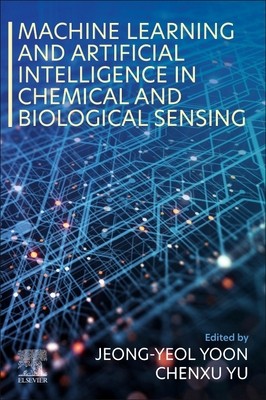
- We will send in 10–14 business days.
- Publisher: Elsevier Science
- ISBN-10: 0443220018
- ISBN-13: 9780443220012
- Format: 15.2 x 22.9 x 2.1 cm, minkšti viršeliai
- Language: English
- SAVE -10% with code: EXTRA
Machine Learning and Artificial Intelligence in Chemical and Biological Sensing (e-book) (used book) | bookbook.eu
Reviews
Description
Machine learning (ML) has recently become popular in chemical and biological sensing applications. ML is a subset of artificial intelligence (AI) and other AI techniques have been used in various chemical and biological sensing. Machine Learning and Artificial Intelligence in Chemical and Biological Sensing covers the theoretical background and practical applications of various ML/AI methods toward chemical and biological sensing. No comprehensive reference text has been available previously to cover the wide breadth of this topic. The Editors have written the first three chapters to firmly introduce the reader to fundamental ML theories that can be used for chemical/biosensing. The subsequent chapters then cover the practical applications with contributions by various experts in the field. They show how ML and AI-based techniques can provide solutions for: 1) identifying and quantifying target molecules when specific receptors are unavailable 2) analyzing complex mixtures of target molecules, such as gut microbiome and soil microbiome 3) analyzing high-throughput and high-dimensional data, such as drug screening, molecular interaction, and environmental toxicant analysis, 4) analyzing complex data sets where fingerprinting approach is needed This book is written primarily for upper undergraduate students, graduate students, research staff, and faculty members at teaching and research universities and colleges who are working on chemical sensing, biosensing, analytical chemistry, analytical biochemistry, biomedical imaging, medical diagnostics, environmental monitoring, and agricultural applications.
EXTRA 10 % discount with code: EXTRA
The promotion ends in 23d.22:41:57
The discount code is valid when purchasing from 10 €. Discounts do not stack.
- Publisher: Elsevier Science
- ISBN-10: 0443220018
- ISBN-13: 9780443220012
- Format: 15.2 x 22.9 x 2.1 cm, minkšti viršeliai
- Language: English English
Machine learning (ML) has recently become popular in chemical and biological sensing applications. ML is a subset of artificial intelligence (AI) and other AI techniques have been used in various chemical and biological sensing. Machine Learning and Artificial Intelligence in Chemical and Biological Sensing covers the theoretical background and practical applications of various ML/AI methods toward chemical and biological sensing. No comprehensive reference text has been available previously to cover the wide breadth of this topic. The Editors have written the first three chapters to firmly introduce the reader to fundamental ML theories that can be used for chemical/biosensing. The subsequent chapters then cover the practical applications with contributions by various experts in the field. They show how ML and AI-based techniques can provide solutions for: 1) identifying and quantifying target molecules when specific receptors are unavailable 2) analyzing complex mixtures of target molecules, such as gut microbiome and soil microbiome 3) analyzing high-throughput and high-dimensional data, such as drug screening, molecular interaction, and environmental toxicant analysis, 4) analyzing complex data sets where fingerprinting approach is needed This book is written primarily for upper undergraduate students, graduate students, research staff, and faculty members at teaching and research universities and colleges who are working on chemical sensing, biosensing, analytical chemistry, analytical biochemistry, biomedical imaging, medical diagnostics, environmental monitoring, and agricultural applications.


Reviews